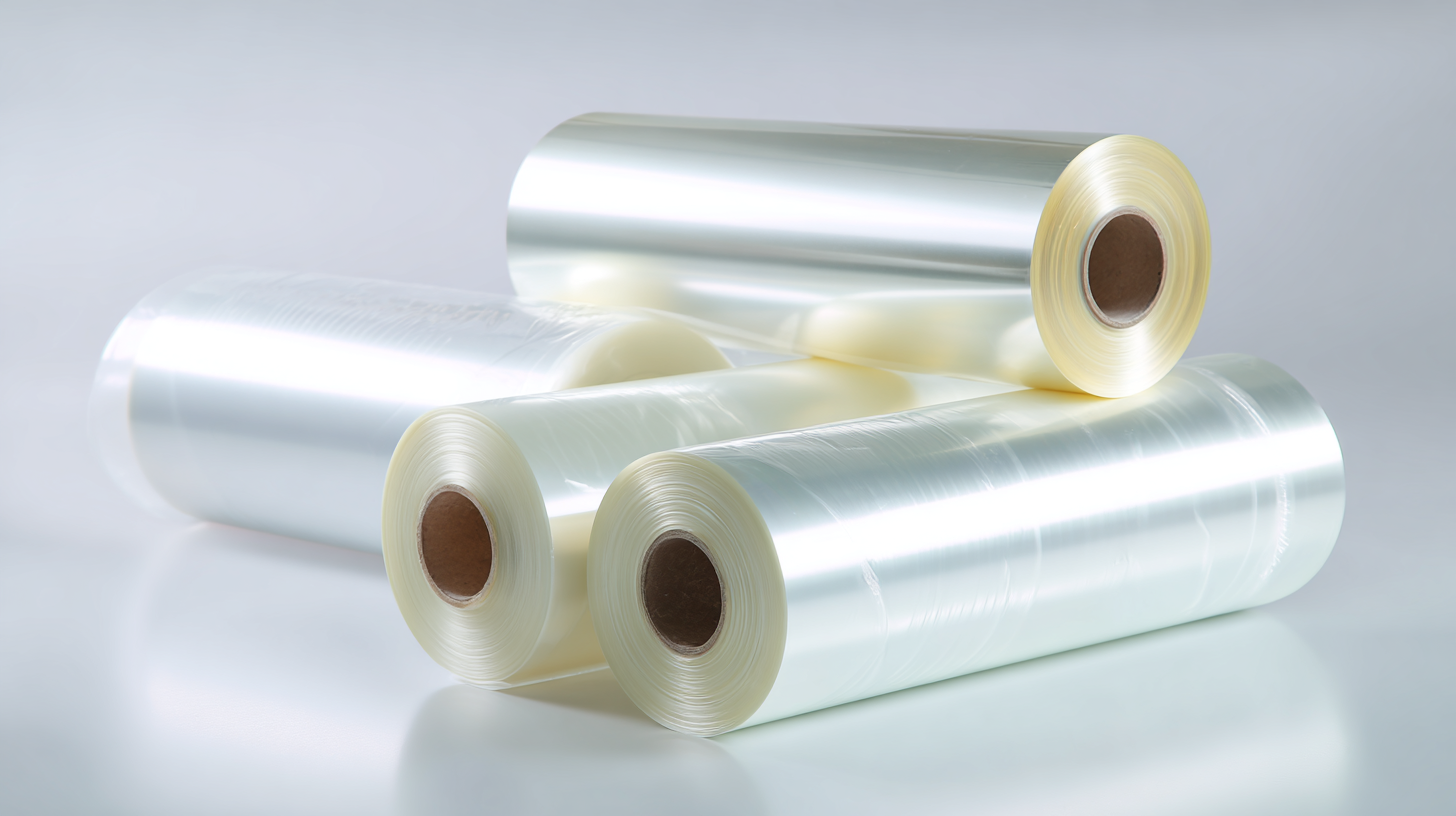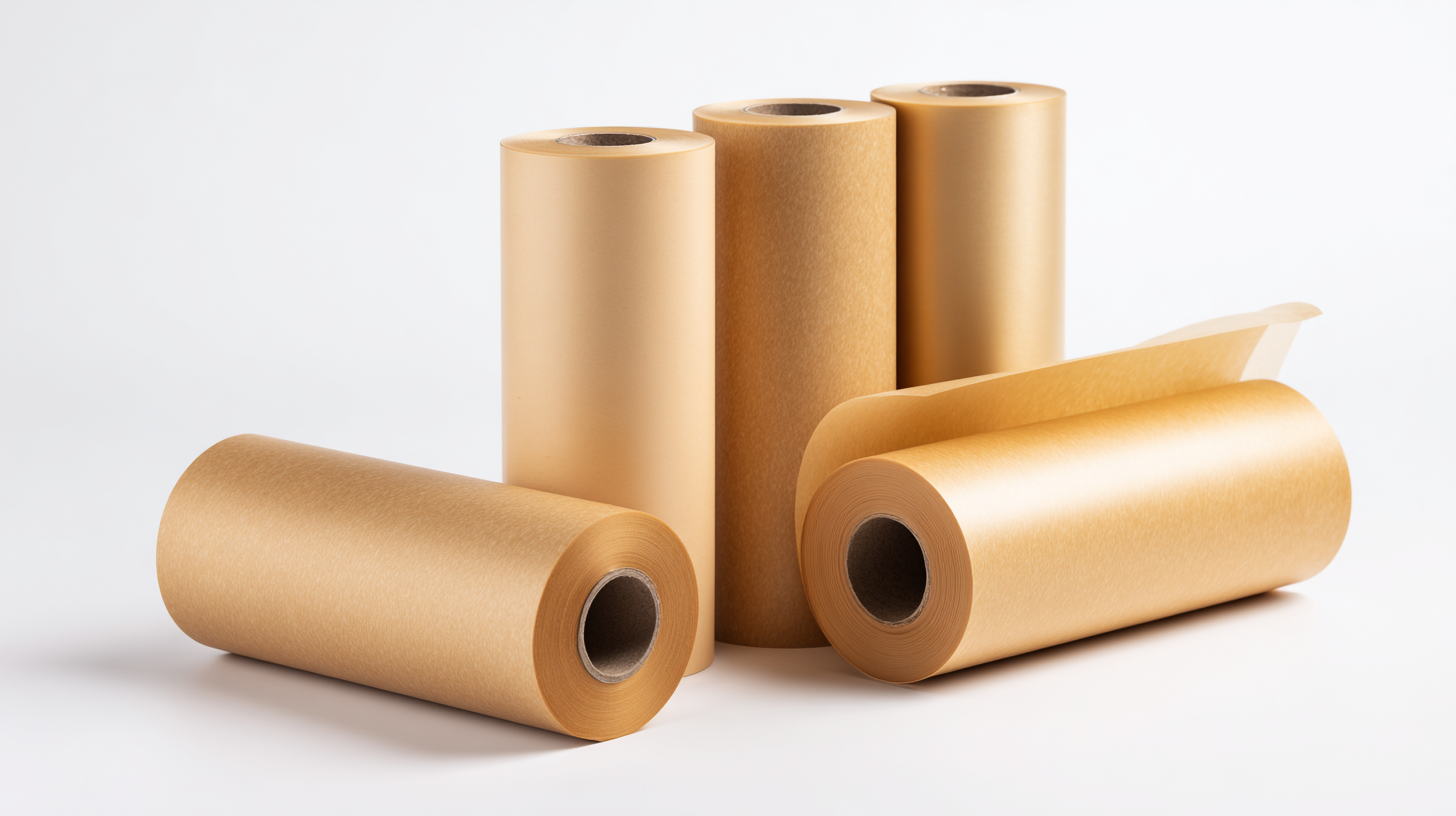
How to Choose the Best OPP Single Layer Heat Sealing Film for Your Packaging Needs
 Choosing the right packaging materials is crucial for preserving your products while ensuring they reach consumers in pristine condition. One popular choice among manufacturers is the OPP Single Layer Heat Sealing Film, known for its versatility and reliability. This exceptional film offers excellent barrier properties, making it ideal for a wide range of applications, from food packaging to industrial uses. However, with numerous options available on the market, selecting the best OPP Single Layer Heat Sealing Film for your specific needs can be a daunting task.
Choosing the right packaging materials is crucial for preserving your products while ensuring they reach consumers in pristine condition. One popular choice among manufacturers is the OPP Single Layer Heat Sealing Film, known for its versatility and reliability. This exceptional film offers excellent barrier properties, making it ideal for a wide range of applications, from food packaging to industrial uses. However, with numerous options available on the market, selecting the best OPP Single Layer Heat Sealing Film for your specific needs can be a daunting task.
Factors such as thickness, seal strength, and compatibility with your packaging machinery all play a significant role in determining the optimal film for your products. In this blog post, we will explore the essential criteria to consider, helping you make an informed choice that enhances your packaging solutions and meets your business objectives.
Key Features to Consider When Selecting OPP Single Layer Heat Sealing Film
When selecting OPP (Oriented Polypropylene) single layer heat sealing film for packaging, there are several key features to consider that can significantly impact the performance and efficiency of your product. One of the primary attributes is the seal strength, which is crucial for ensuring the integrity of the package. According to a recent report by Smithers Pira, high seal strength films can enhance product shelf life by up to 30% due to their ability to resist environmental factors such as moisture and air. This is particularly important for food packaging where freshness is paramount.
Another important feature is the film's clarity and gloss, which not only impacts the aesthetic appeal of the packaging but also improves visibility for the consumer. Research shows that products with high-quality packaging can improve consumer purchase intention by as much as 60% (Packaging Strategies, 2022). Additionally, the thickness of the film plays a significant role in its durability and anti-puncture properties. Films that are too thin may not withstand the rigors of transport and handling, while thicker films can add unnecessary weight and cost. Finding the right balance is essential for optimizing both product safety and cost efficiency in your packaging process.
How to Choose the Best OPP Single Layer Heat Sealing Film for Your Packaging Needs - Key Features to Consider When Selecting OPP Single Layer Heat Sealing Film
| Feature | Description | Importance |
|---|---|---|
| Film Thickness | Refers to the thickness of the film, typically measured in microns. A thicker film offers better durability but can be more expensive. | High |
| Heat Sealing Temperature | Optimal temperature at which the film can be sealed. Different applications may require different temperatures. | High |
| Clarity | The level of transparency of the film, which is critical for showcasing products. | Medium |
| Moisture Barrier | Ability of the film to resist moisture, which is important for extending shelf life. | High |
| Chemical Resistance | Resistance to various chemicals that may be in contact with the packaging. | Medium |
| Cost-effectiveness | The balance of cost versus performance. Consider bulk purchasing options. | High |
Understanding Different Types of OPP Films for Packaging Applications
Choosing the right OPP (Oriented Polypropylene) film for your packaging needs can significantly impact the durability, appearance, and functionality of your products. OPP films come in various types, tailored to different packaging applications. For example, BOPP (Biaxially Oriented Polypropylene) is more commonly used for food packaging due to its excellent barrier properties against moisture and gases, ensuring freshness and extending shelf life. It also provides a clear view of the product, enhancing visibility on retail shelves.
In addition to BOPP, there's also CPP (Cast Polypropylene), which is softer and more flexible, making it ideal for applications requiring a sealable format. This type of film is often chosen for wrapping snacks or other products that require a tight seal. Moreover, the choice between matte and glossy finishes can greatly affect consumer perception. Matte finishes tend to convey a premium feel, whereas glossy finishes can attract attention with vibrant colors. Understanding these different types of OPP films and their specific characteristics is crucial in selecting the most suitable option for your packaging requirements.
Comparison of OPP Film Properties for Packaging Applications
Evaluating Thickness and Durability for Optimal Packaging Solutions
When selecting the optimal OPP single layer heat sealing film for your packaging needs, it is crucial to evaluate both thickness and durability. The thickness of the film directly impacts its strength and protective qualities. Thicker films generally offer better resistance to punctures and tears, making them ideal for products that may experience rough handling during shipping and storage. However, it is essential to balance thickness with the flexibility required for your specific application, as an excessively thick film may hinder the ease of sealing and affect the overall aesthetics of your packaging.
Durability is another key factor that should not be overlooked. The ability of the film to withstand varying temperatures, humidity, and exposure to chemicals plays a vital role in ensuring product integrity. It’s important to assess the end-use conditions of your packaged items. For instance, products stored in cold environments may require a film that can perform reliably at low temperatures without becoming brittle. Testing samples under real-world conditions can ensure that your chosen OPP heat sealing film meets the durability standards necessary for your products, providing both protection and a polished presentation.
The Impact of Environmental Sustainability on OPP Film Choices
When selecting OPP single layer heat sealing films for packaging, environmental sustainability has become a pivotal consideration. As consumers increasingly favor eco-friendly products, manufacturers are feeling the pressure to adopt sustainable practices. OPP films, which are typically made from polypropylene, can vary widely in their environmental impact depending on their production methods and disposal options. It is crucial to choose films that not only meet functional requirements but also align with sustainable values by being recyclable, biodegradable, or produced from renewable resources.
Moreover, the rise of regulatory frameworks aimed at reducing plastic waste has affected OPP film choices. Companies are exploring alternative materials and innovations such as water-based coatings that enhance recyclability while preserving the integrity of the packaging. This shift not only addresses consumer demand for greener options but also helps businesses comply with evolving environmental regulations. By prioritizing sustainable OPP films, companies can demonstrate their commitment to environmental stewardship and differentiate themselves in a competitive market, ultimately fostering brand loyalty among eco-conscious customers.

Industry Trends and Innovations in OPP Packaging for 2025
As we look towards 2025, the OPP (Oriented Polypropylene) packaging industry is set to undergo significant transformations driven by innovation and evolving market demands. One of the leading trends is the increasing focus on sustainability, with manufacturers exploring biodegradable and recyclable materials. This shift reflects a broader commitment to reducing environmental impact while maintaining the functionality and aesthetic qualities that OPP films offer. Companies are investing in research and development to not only produce films with lower carbon footprints but also to ensure that these materials meet the high standards of clarity and strength that consumers expect.

In addition to sustainability, advancements in technology are paving the way for smarter packaging solutions. Innovations such as smart sensors integrated into OPP films are gaining traction, providing valuable information about the freshness and safety of packaged goods. This trend aligns with the growing consumer demand for transparency and traceability in product packaging. Furthermore, the customization capabilities of OPP films are set to expand, allowing businesses to create unique designs and features that cater to specific brand identities and market segments. As we move into 2025, these trends will shape the landscape of OPP packaging and influence the choices businesses make to meet their packaging needs effectively.
